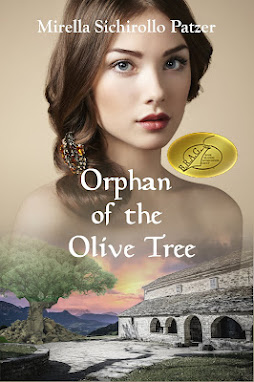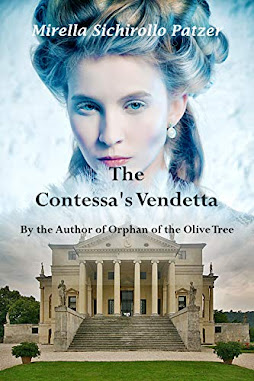19th Century
Those Not-So Wicked Sporting Ladies of the Wicked West - Pearl DeVere
A hundred years ago they were known as soiled doves, frail sisters, bawds, painted ladies, scarlet women, fille de joie, molls, courtesans, concubines, sporting woman, denizens, strumpets, adventuresses, working girls, tarts, unfortunates, the demimonde, the tenderloin, shady ladies, jezebels, harridans and harlots, among many other names, and more often than not, were residents of a brothel, red-light district, parlor house, seraglio, hog ranch, crib, harem, the Line, whorehouse, bordello, or a bawdy house. Many of these ladies of the night had fallen unintentionally – and many intentionally -- into the sporting life as it was typically known, wishing to obscure their true names, origins and backstories, making it virtually impossible to ever reliably unravel their individual and occasionally, lurid histories.
In most western frontier towns where men significantly outnumbered women -- a ratio of at least 20 to 1 and typically far greater -- prostitutes were considered an essential, though certainly not warmly embraced, necessity by their conservative female counterparts. Decent married women were willing to put up with prostitutes to keep those randy single men away from their own otherwise puritanical daughters until those men managed to firmly affix a wedding ring on their daughters’ hand. All a young girl had was her reputation and, as was well known, if that evaporated even by innuendo, she was most likely ruined for the rest of her life as borne out in literature by Jane Austen, Henry James, Edith Wharton and countless other authors of the day.
Once a woman had crossed over that line, society tended to lump loose women into a single mold. Certainly all of them had to maintain a shrewd edge, but they were quite diverse in terms of temperament, education, worldliness, scientific and entrepreneurial endeavors.
Of these so-called fallen women, it’s interesting to note that the madams, or owners, of many brothels, were wealthy, powerful and quite influential individuals whose brothels became centers of community, arts and culture in western towns. Some of the most powerful madams were serious patronesses of art, music and education, as well as being philanthropists and major real estate moguls.
Being a madam was one of the few actual “careers” afforded a woman in the 19th Century -- the earliest prototype we have of a career woman, in fact! Madams (and other wealthy prostitutes) donated money to charities, hospitals, churches, schools, cared for the impoverished and sick, and housed the homeless when no one else could be bothered. They were involved with helping fund many cities’ initial infrastructures of gas, telephone and electric lines as well as owning mining claims, stocks, investing in municipal bonds, even jumping into the fray to keep banks afloat during challenging financial years. There was a huge demand for their money, but the women themselves, as well as their children, were forever shunned by society.
According to June Willson Read’s biography “Frontier Madam: The Life of Dell Burke, Lady of Lusk”, huge financial contributions by Dell Burke, a madam in Lusk, Wyoming, created infrastructures such as railroads, waterworks and electric lines through that part of the state. Several biographers have mentioned Josephine “Chicago Joe” Hensley (or Airey), a madam in Helena, Montana who had a weekly payroll of $1,000 for numerous businesses she owned outside that of her brothel’s, paid hefty taxes on more than $200,000 in real estate holdings, and also contributed huge sums to many charities and political candidates, although she was never allowed to attend any of their meetings or even be introduced to anyone involved in those important enterprises. According to Anne Seagraves’ book “Soiled Doves: Prostitution in the Early West”, “these enterprising women, who played an important role within their communities, were never invited to join or attend a commercial club. They were not accepted by society, and in most cases, were not even protected by the law due to their profession.”
Mattie Silks, a wealthy Denver brothel owner, claimed that she had become a madam simply as a successful business venture and that she had never worked as a prostitute. This claim was quite interestingly never disputed. And Georgia Lee, a Fairbanks, Alaska prostitute, was quietly involved in funding many civic affairs and co-founded the Fairbanks branch of the Humane Society according to “Good Time Girls of the Alaska-Yukon Gold Rush” by Lael Morgan.
Another well known beautiful face who was a particular enigma was Etta Place, who for those of us enamored many years ago with Paul Newman and Robert Redford in “Butch Cassidy and The Sundance Kid”, was either a high-class parlor attraction at Fanny Porter’s infamous house in Hell’s Half Acre in San Antonio, Texas, or she was a sedate schoolteacher in a one-room rural schoolhouse, helping to mastermind many of the infamous duos’ train robberies, something of a Robin Hood operation, according to Michael Rutter’s “Boudoirs to Brothels – the Intimate World of Wild West Women”. A young lady who led an incredibly complex double life, the beautiful Etta Place quite skillfully disappeared without a trace in the early 1900s.
Many prostitutes had exceptional nursing and mid-wife skills, often obtained by necessity, along with vast knowledge of herbs, medicinal concoctions and other healing remedies. Occasionally they were clandestinely called upon to assist a married woman experiencing a difficult childbirth, but that same woman would turn her head the opposite direction afterwards if she encountered the prostitute on the street, refusing to acknowledge an acquaintance. Additionally, women were not allowed any form of birth control (which was often unreliable anyway) and some prostitutes were quietly skilled abortionists, even aiding “respectable women” who wished to end an ill-timed pregnancy. In the years between 1850 and 1870, one historian estimated that one abortion was performed for every five or six live births in America.
Although she later denied it, Margaret Mitchell originally claimed that her fictional character of Belle Watling in “Gone with the Wind” was based on a madam in Lexington, Kentucky known as Belle Brezing, who died just after the movie’s 1939 release. Ms. Mitchell’s husband was from Lexington and familiar with Belle Brezing’s checkered history, including the fact that the woman was quite well known as an excellent nurse. In both the book and the movie, Belle Watling indeed claims to be a nurse and donates a rich purse filled with gold coins to the rapidly failing Confederate cause through Melanie Wilkes, the only married woman within the group willing to be seen accepting such a windfall from one of Atlanta’s most notorious madams.
Pearl DeVere, who was the madam of the Old Homestead brothel in Cripple Creek, Colorado, like so many others of the demimonde, wove multiple stories about her early life that makes it impossible to verify any of the tales. Not even a verifiable photograph of the young woman exists. Born in Evansville, Indiana in 1859 as Eliza Martin into what certainly appears to have been a well-to-do family, exactly what led her into the world of prostitution is somewhat mysterious, based on the many different tales that Pearl herself fabricated over her short life. She arrived in Cripple Creek possibly via Denver, around the time of the 1893 repeal of the Silver Act and set herself up quickly in the “trade” in the newly booming mining town. Her sophistication, remarkable intelligence, and appreciation of fine arts and culture helped her build one of the most influential brothels in the country.
So who was Pearl DeVere? Unless you’re from Colorado, have studied the Cripple Creek gold rush or have actually visited Cripple Creek and maybe participated in the annual Pearl DeVere bed race or some other quaint festival, you’ve probably never even heard of this woman. And, as we’ve so often heard in recent years, history is really just “his” story and rarely also “her” story, particularly with respect to “career” women and their contributions to our past.
Mabel Barbee Lee’s memoir, “Cripple Creek Days”, published in 1958, was drawn from her recollections as a very young child having grown up in the region. In the acknowledgements Ms. Lee mentions that one of her neighbor’s names, Molly Letts, was a pseudonym in her book because she had been a former prostitute and even after fifty years had ensued, she refused to let the woman’s reputation be sullied.
Without question, however, at age 11, Mabel’s recollections of Pearl DeVere were firmly stamped on her memory, even though Mabel’s timelines appear to be a little fuzzy on occasion. In mining camps very few women had beautiful stylish clothes or jewelry or immodest displays of wealth, certainly very impressionable items for a pre-teen. Pearl was an excellent dress designer and wore her creations perfectly over her marvelously sculpted physique. At age 31 she was a beautiful girl with red hair, bright flashing eyes and a slender build sporting gorgeous tight-fitting clothes and it was said that she never wore the same outfit twice. She was strong-willed, shrewd, very well read, eloquent, and a very smart businesswoman.
According to Janet Lecompte’s introduction in “Emily: The Diary of a Hard-Worked Woman”, a journal by a 42-year-old Denver divorcee: “In 1890 the average working woman in the United States had started to work at age 15 and was now 22, earning less than $6 a week for a 12-hour day. In Denver, 15% of all women worked in 1890, most of them as domestic help, laundresses, or seamstresses, some making as much as $4-$6 per week.” Unlike out East, there were very few factories or mills. A miner’s wages typically brought a working man $3 per day for a nine-hour day. By contrast, a wealthy man booking a stylish young courtesan’s company at the Old Homestead was shelling out $250 for the evening and had to book well in advance! One can easily see the attraction for a young cultured woman such as Pearl to have built such an empire!
Mabel Barbee Lee goes on to say in her memoir: “Pearl DeVere became my secret sorrow, the heroine of my fondest daydreams, mysterious, fascinating and forbidden.” Even some fifty years afterwards, Mabel vividly recalled hearing a gramophone playing from the Old Homestead’s windows, an expensive toy back in those days, and distinctly remembers the many details of Pearl’s unusual New Orleans’ early jazz style funeral cortege. Accounts of the Old Homestead’s opulent parlor with a telephone, expensive Turkish carpets, chandeliers and the unheard of extravagance of two bathtubs also fill Mabel’s remembrances. These finer houses demanded an almost European-like adherence to order, an essential step towards our country’s slowly working its way towards the civil society we’ve attempted to establish since that time.
Along with so many others of the demimonde, Pearl’s contributions to the economic and political movements of the era were obscured as we’ve followed “his” story through our country’s development. However, such acknowledgement is richly deserved and a sad omission. These enterprising women’s contributions are long forgotten – or in many cases, were never even recognized. But silently, all around us, as our first “career” women, their intriguing legacies live on.
Photos courtesy Charlotte Bumgarner, owner of The Old Homestead Museum, Cripple Creek CO
(1) Pearl DeVere’s grave marker – so many admirers originally placed jewelry around the heart-shaped stone that unfortunately the gifts stained the marble and a fence has now been erected around the tombstone to deflect such well-meaning, but destructive additions. Appropriately, however, a pearl necklace remains.
(2) Lil Lovell – a beautiful prostitute in Denver who may have originally worked at the Old Homestead according to “Brothels, Bordellos, and Bad Girls - Prostitution in Colorado, 1860-1930” written by Jan MacKell Collins.
The above biography was written by Mim Eichman, the author of A Sparrow Alone.
Mim Eichmann’s debut historical fiction novel “A Sparrow Alone” – a provocative coming-of-age saga of female empowerment during the 1890s Cripple Creek, CO gold rush -- was published on April 15, 2020 by Living Springs Publishers of Centennial, CO. Ms. Eichmann is a professional musician, singer/songwriter and choreographer living in the Chicago area. Her author website is: www.mimeichmann.com.





















Post a Comment
0 Comments